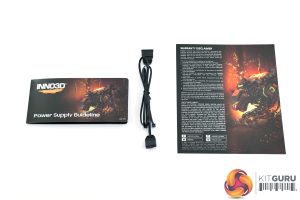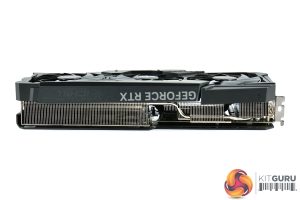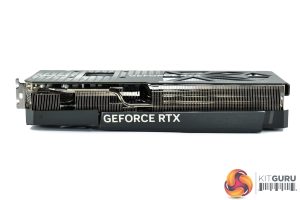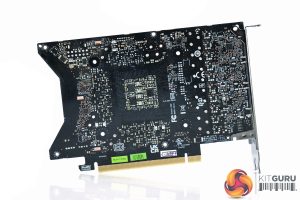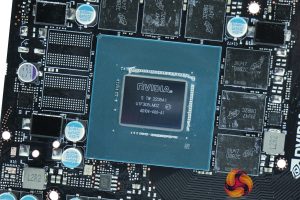The Inno3D RTX 4070 Ti iChill X3ships in a black box, with an image of the card visible on the front, along with the iChill brand logo. On the back, Inno3D highlights various key features of the card in multi-lingual text.
As for included accessories, we find some documentation, as well as an ARGB cable that can be used to synchronise the card's LEDs with your motherboard.
A fairly basic GPU holder is also included, which simply takes some weight off the card to alleviate pressure on the PCIe slot. There's also a triple 8-pin power adapter, which is actually more interesting than it looks, considering the fact this card has a 320W TGP, and the Gigabyte Gaming OC we looked at as part of our launch review only comes with a dual 8-pin power adapter, despite being able to hit up to 340W. It may not be hugely significant in the overall context of a graphics card, but we look at whether or not a triple 8-pin adapter is necessary for the RTX 4070 Ti later in the review.
As for the graphics card itself, the design will be immediately familiar to anyone who has already seen our review of the RTX 4080 iChill X3, as the shroud design is identical between the two. That means we get a pretty aggressive overall aesthetic which may not be to everybody's taste, but personally I do quite like it.
The shroud itself is made mostly from plastic, but there are two grey metal plates that are screwed on top purely for aesthetic reasons. We can also note three 98mm fans, while the central fan spins in reverse, an increasingly popular feature which just helps to reduce airflow turbulence, thus increasing air pressure down onto the heatsink.
As for the dimensions, the 4070 Ti iChill is once more identical to the RTX 4080 version, measuring in at 334 x 148 x 62mm. It weighs in at 1.66kg.
As expected, we find a metal backplate fitted to the rear of the PCB, covering the length of the card but with several large cut-outs towards the end to aid airflow. The backplate is decorated with lots of small triangles too, simply adding some visual interest.
Just like the RTX 4080 iChill, there's no dual-BIOS on the 4070 Ti model either.
The 12VHPWR connector is present on the side of the card, while display outputs are as standard with 3x DisplayPort 1.4 and 1x HDMI 2.1.
It's only when we look internally that we see the biggest differences between the 4070 Ti and 4080 iChill designs. The PCB, for instance, has been re-designed and it resembles an Nvidia Founders Edition with the v-shape design.
In terms of the VRM, Inno3D is using an 11-phase solution for the GPU and 2-phase design for the memory. 55A Alpha and Omega AOZ5311NQI MOSFETs are used across the board. Two Richtek controllers are deployed, with an RT8848C used for the GPU VRM, and an RT8843B for the memory VRM.
The cooler has also been tweaked compared to the RTX 4080 model. For one, instead of a shared baseplate for the GPU and VRM, the GPU contacts with a nickel-plated copper baseplate, while the memory contacts an aluminium baseplate. There's a total of seven 6mm heatpipes used to draw heat away from the GPU and memory, but an extra heatpipe is also used for MOSFET cooling.
Lastly, Inno3D is using thermal pads on the underside of the backplate, effectively turning it into a large heatspreader.
 KitGuru KitGuru.net – Tech News | Hardware News | Hardware Reviews | IOS | Mobile | Gaming | Graphics Cards
KitGuru KitGuru.net – Tech News | Hardware News | Hardware Reviews | IOS | Mobile | Gaming | Graphics Cards




